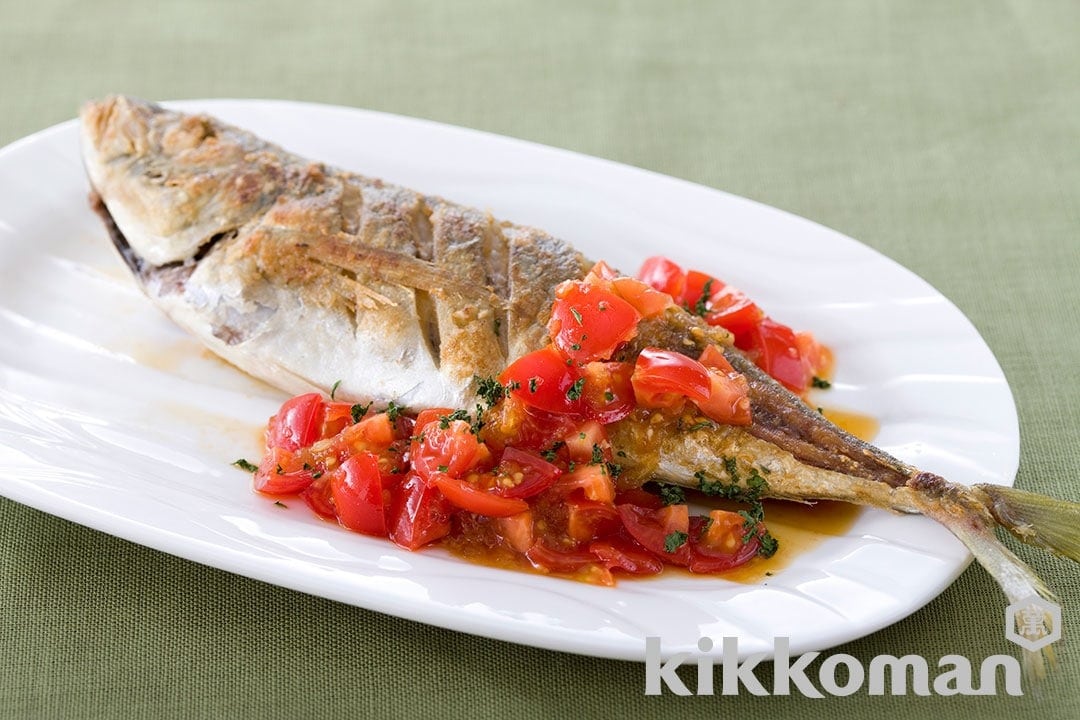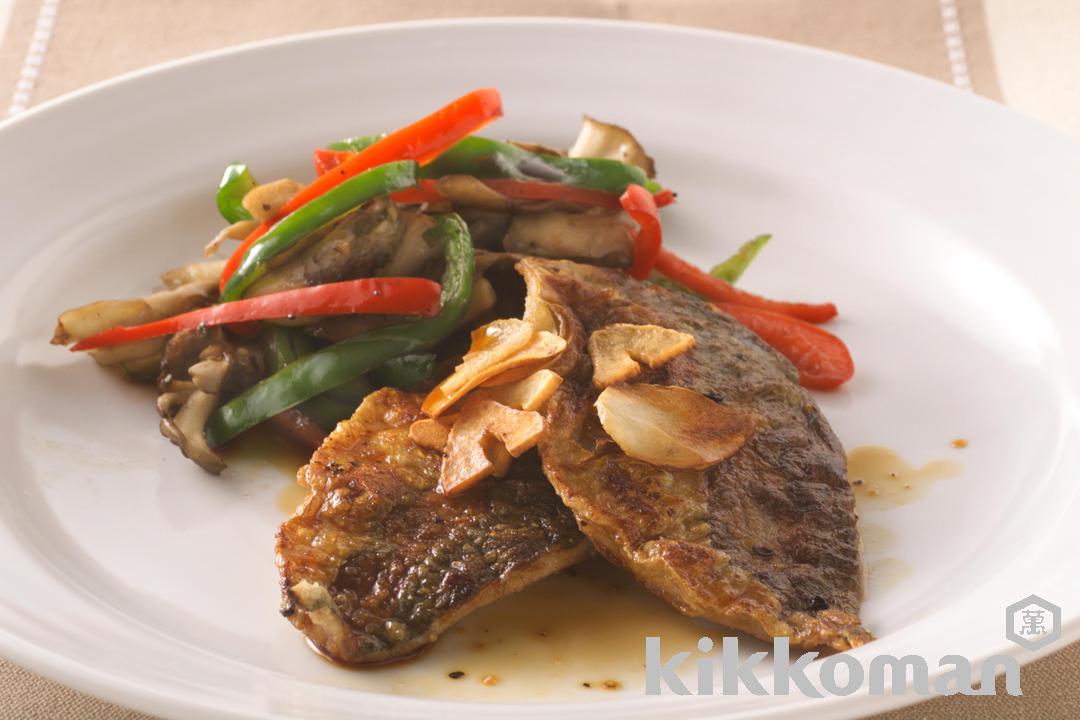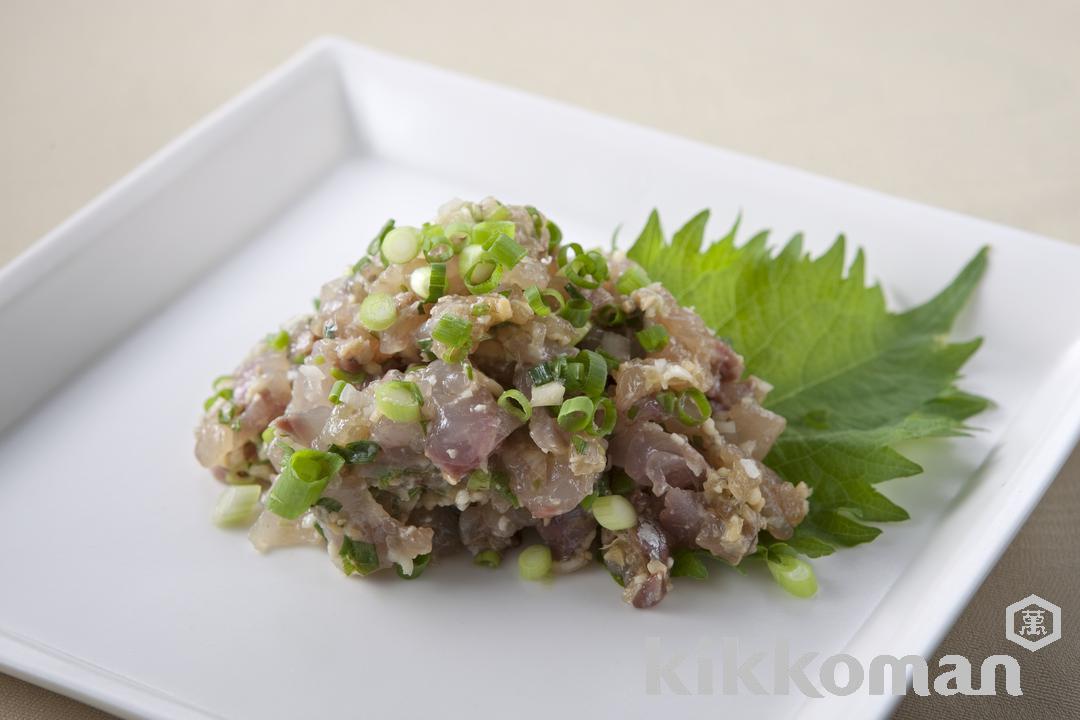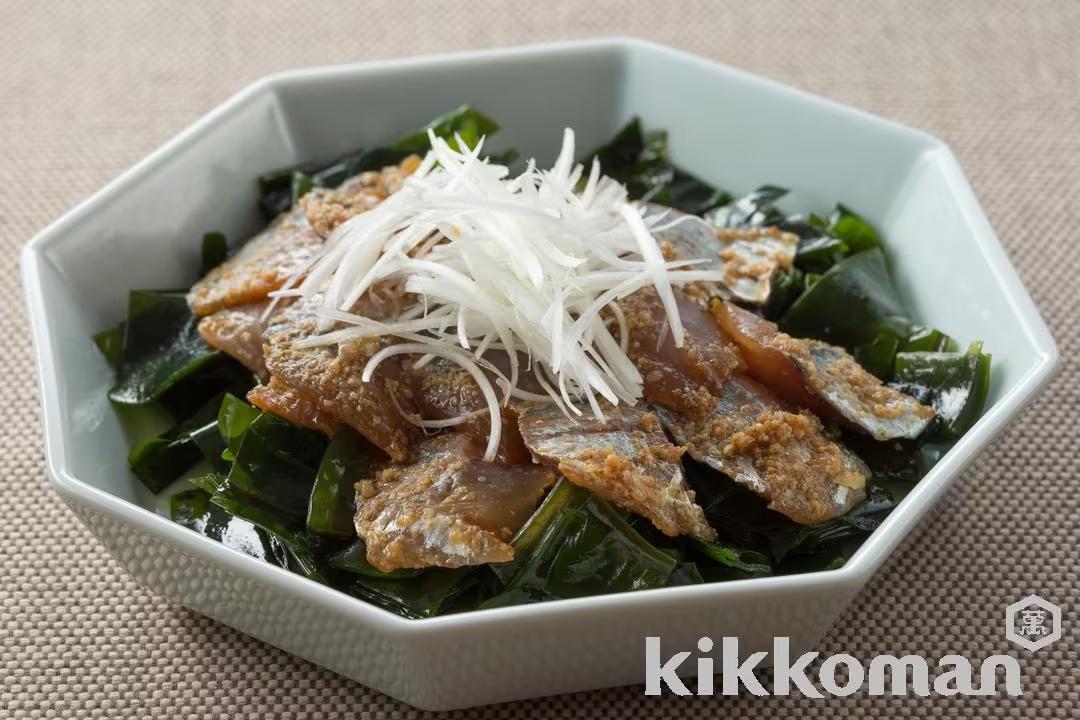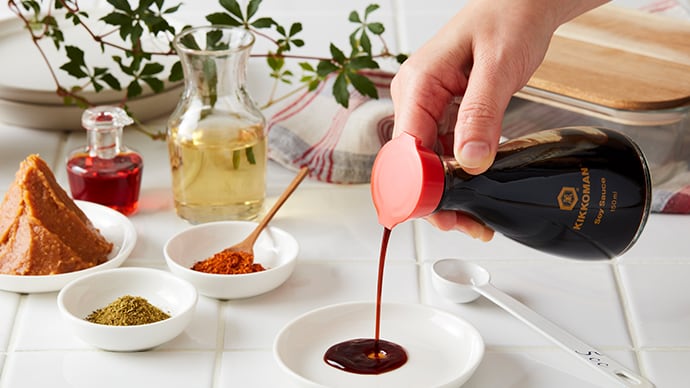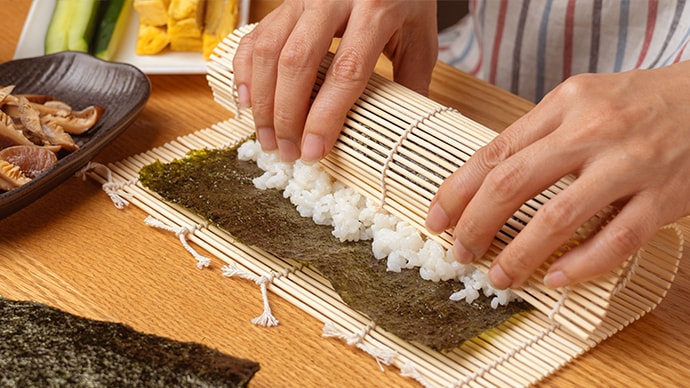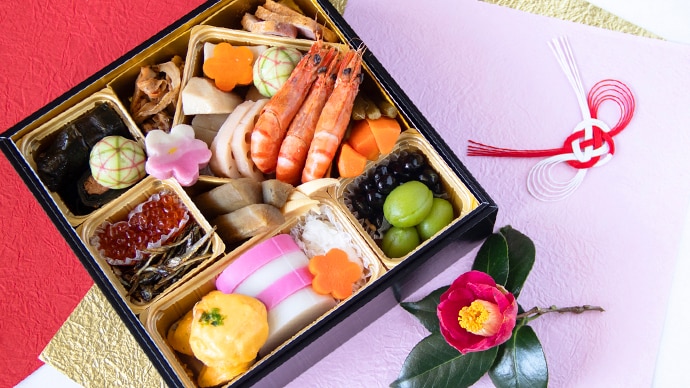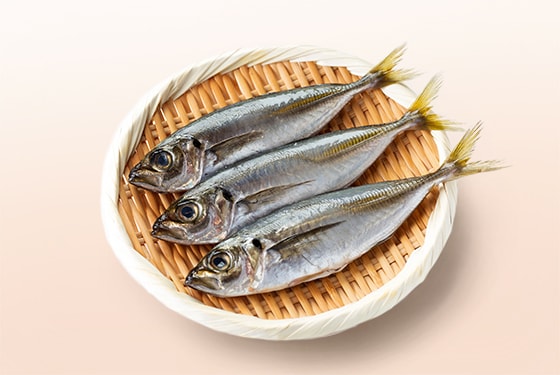
A small blue fish commonly eaten as sashimi or dried fish
What is aji?
Aji / Horse Mackerel (あじ in Japanese) inhabits warm seas worldwide and migrate with warm currents. These are caught in large quantities and are relatively inexpensive. Aji is used in a wide range of dishes, including sashimi, tataki (chopped raw fish mixed with garnish), salt-grilled, fried, simmered and fish balls. They range in size from less than 10 cm to nearly 50 cm. Small aji are often deep-fried and then marinated in a sauce made of soy sauce, vinegar, mirin, and sugar, known as nanbanzuke.
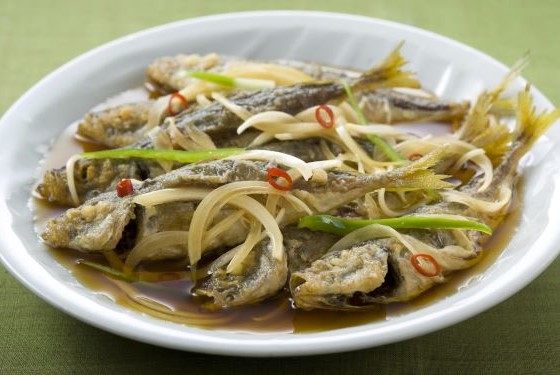
Nutrition facts
Aji is characterized by its high content of protein and the omega-3 fatty acids DHA and EPA. DHA is expected to contribute to brain cell activation, while EPA is expected to contribute to blood health. It is also rich in calcium and vitamin D, which helps strengthen bones. Vitamin D is involved in regulating immune function as well as bone health, and it is thought that raising blood levels of vitamin D can help prevent all kinds of diseases.
As aji that are smaller in size have softer bones, if fried or stewed whole, they can be eaten whole. This also allows you to get a good amount of calcium.
Storage to prevent food loss
Since it spoils easily if left with its internal organs intact, clean the aji by removing the guts, washing it thoroughly, and wiping off the moisture. Sprinkle both sides with salt, wipe off the drawn-out moisture, wrap it in paper towels, place it in a plastic bag, and store it in the refrigerator or freezer. It can be kept in the refrigerator for 2-3 days.
Cooking Basics
1. Remove scales (de-scale)
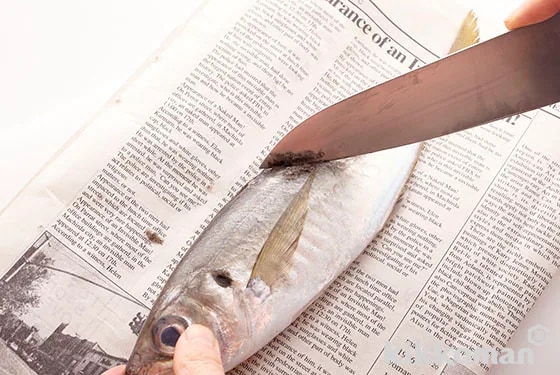
Spread a newspaper out over a cutting board and place the horse mackerel down. Move the tip of the knife from the tail towards the head to scrape off the scales.
2. Remove scutes (curved lateral line of hard scales)
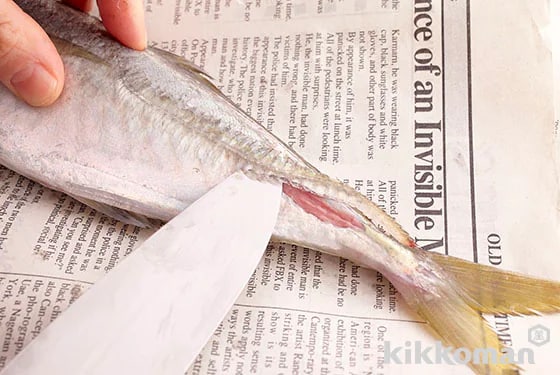
Make a small angled cut with the tip of the knife from the tail and scrape off the scutes. Repeat in the same manner for the other side of the fish.
3. Chop off the head
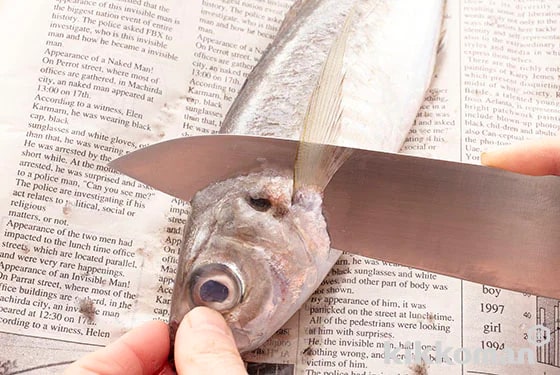
Place the knife behind the pectoral fin and make an incision in the direction of the head with the knife at an angle (parallel to the gills). Slice in approximately half-way and then turn the horse mackerel over and repeat in the same manner on the opposite side making an incision with the knife to chop off the head.
4. Remove the innards
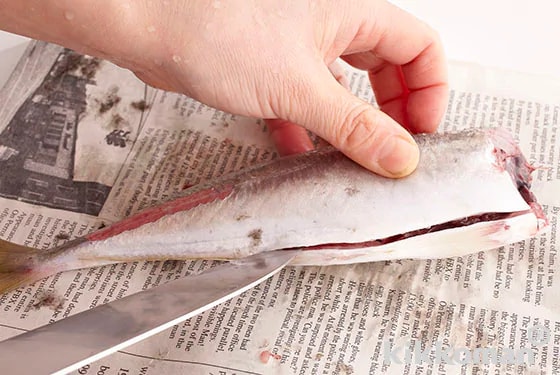
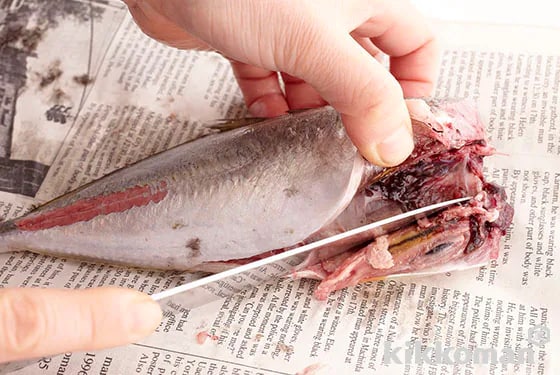
Insert the tip of the knife into the belly and make a shallow incision up to the anal fin, open the belly and remove the innards. At this point wrap up the innards in a newspaper, throw these away and rinse the horse mackerel with water and pat dry to remove excess moisture.
5. Fillet into 2-layers
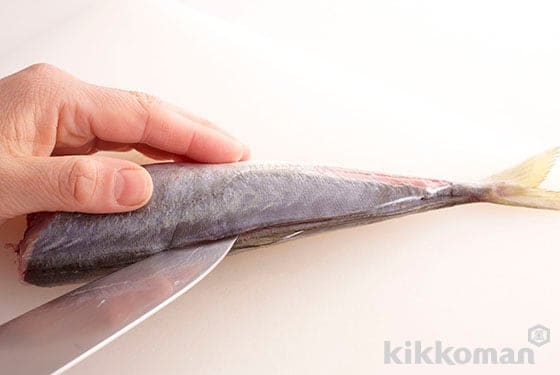
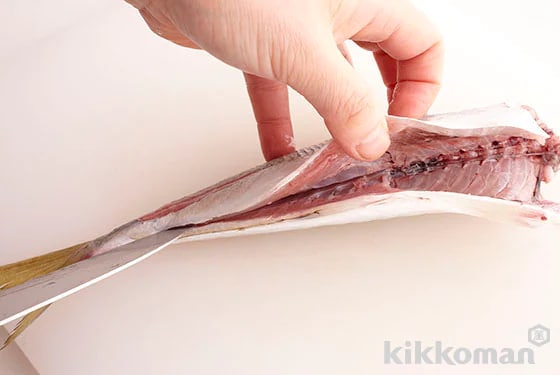
Insert the knife from the flank until it reaches the backbone and slide the knife towards the head of the fish. Turn the horse mackerel over and repeat with the knife in the same manner from the belly. Lastly insert the knife facing the tail and slide it along the backbone to completely remove the fillet. Now you have a 2-layer fillet.
6. Fillet into 3-layers
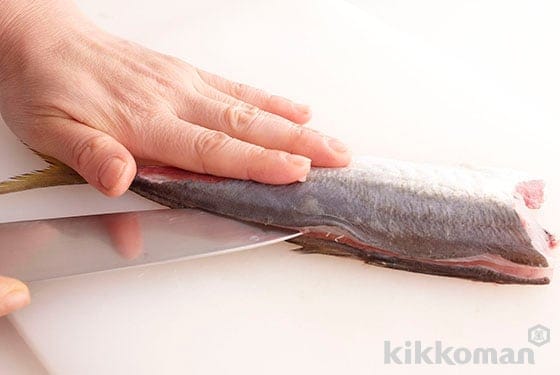
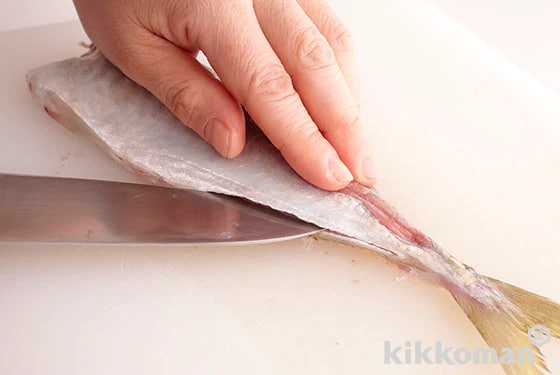
Place the 2-layer filleted horse mackerel with the bones facing downwards, insert the knife from the flank until it reaches the backbone, slide the knife towards the tail to make an incision. Turn the horse mackerel over and make an incision with the knife in the same manner. Insert the knife at the base of the tail and slide it along the top of the backbone to remove the fillet from the backbone. Now you have a 3-layer fillet.
7. Remove the stomach bones
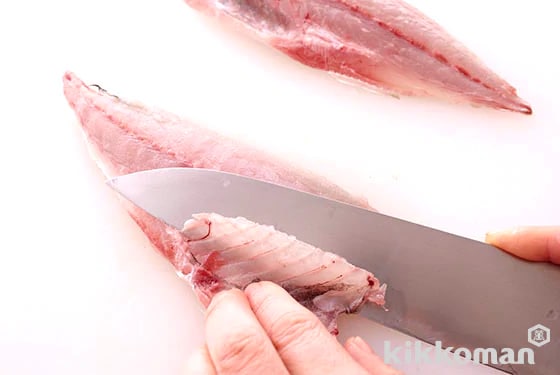
Lay the knife parallel to the cutting board and slice away the stomach bones.
8. Pull out small bones
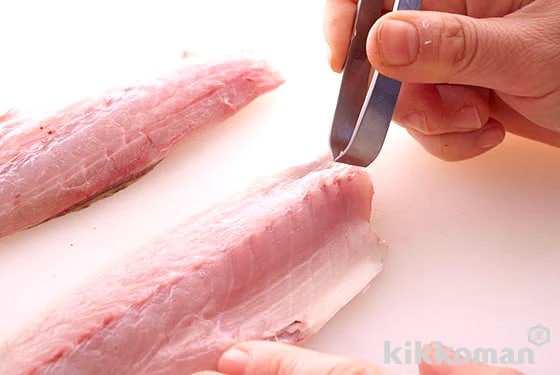
Pull out small bones remaining in the mid-section of the fillet. These can be easily removed when pulled out in in the direction of from tail to head. To ensure no small bones go unnoticed, confirm with your fingers as you work to pull these out.
9. Remove the skin
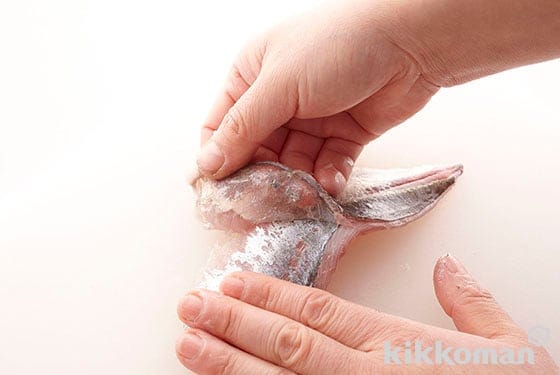
Start skinning from an incision near the head and strip off the skin in the direction towards the tail.
Related Recipes
15min+
143kcal
600mg
10min
126kcal
600mg


